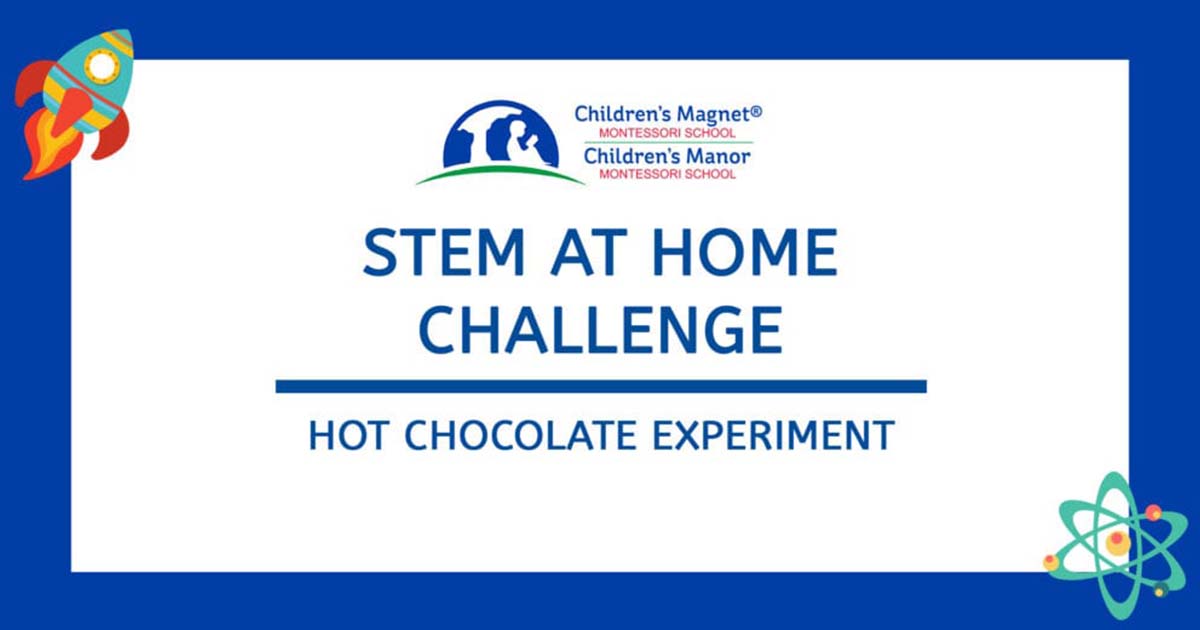
17 Dec STEM Challenge – Hot Chocolate Experiment
We are so excited about our first snow of the season yesterday! The official start of Winter begins Monday (12/21) on the Winter Solstice. The Winter Solstice is the day with the shortest period of daylight and longest night of the year. Now that it is getting colder outside we are going to do an experiment with hot chocolate that you can enjoy to warm yourself up after we are done!
Visit our blog every Thursday to see our latest STEM challenge and share your creations on social media using #CMMSSTEMChallenge or by emailing marketing@childrensmanor.com. Be sure to submit your photos to us by Monday, December 21!
Materials:
-
-
- Hot Chocolate Experiment Result Sheet – You can print or recreate this!
- 2 Mugs
- 6 oz Water
- 6 oz Milk
- 2 Hot Chocolate Mixes – Use a packet or make your own.
- Spoon
- Thermometer
- Marshmallows
- Timer
-
Directions:
-
-
- Gather your materials.
- To begin this experiment, pour 6 ounces of water into one mug and 6 ounces of milk into the other one.
- Next, microwave the mugs for one and half minutes or until the water and milk are hot.
- Remove the mugs out of the microwave. Be careful! The mugs will be hot, so please ask an adult for assistance.
- Add hot chocolate mix to each mug and stir until it is completely dissolved (you can use a hot chocolate packet or make your own).
- Next, measure the temperature of each mug and record the data. What were your results?
- Then, place the same number of marshmallows in each mug and start the timer. Time how long the marshmallows in each mug take to melt. Record your results. Why do you think the marshmallows melted faster in one mug than the other?
- Enjoy your delicious marshmallows and hot chocolate! Invite your sibling or parents to share. Make sure to send us a photo of you enjoying your hot chocolate with your results sheet to marketing@childrensmanor.com by Monday, December 21!
-
The Science Behind the Experiment
After the milk and water were microwaved, the water was a lot hotter than the milk. This is because water heated in a microwave can be heated above its normal boiling point (superheated). In an average kitchen, water boils at 212 degrees Fahrenheit if there is a bubble of steam or air present, like when you boil water to make pasta. But in the absence of bubbles, the water can become superheated above 212 degrees. This occurs when microwaves pass through the cup and heats the water directly, causing it to become hotter than its container. The marshmallows melted and dissolved faster in the water because it should be about 40 degrees hotter than the milk when removed from the microwave. Marshmallows are mainly made of sugar and sugar dissolves in liquid so the hotter liquid makes the sugar dissolve faster.
Don’t forget to send a photo of you and your snowflake to marketing@childrensmanor.com by Monday, December 21!
Activity Credit: A Dab of Glue Will Do


